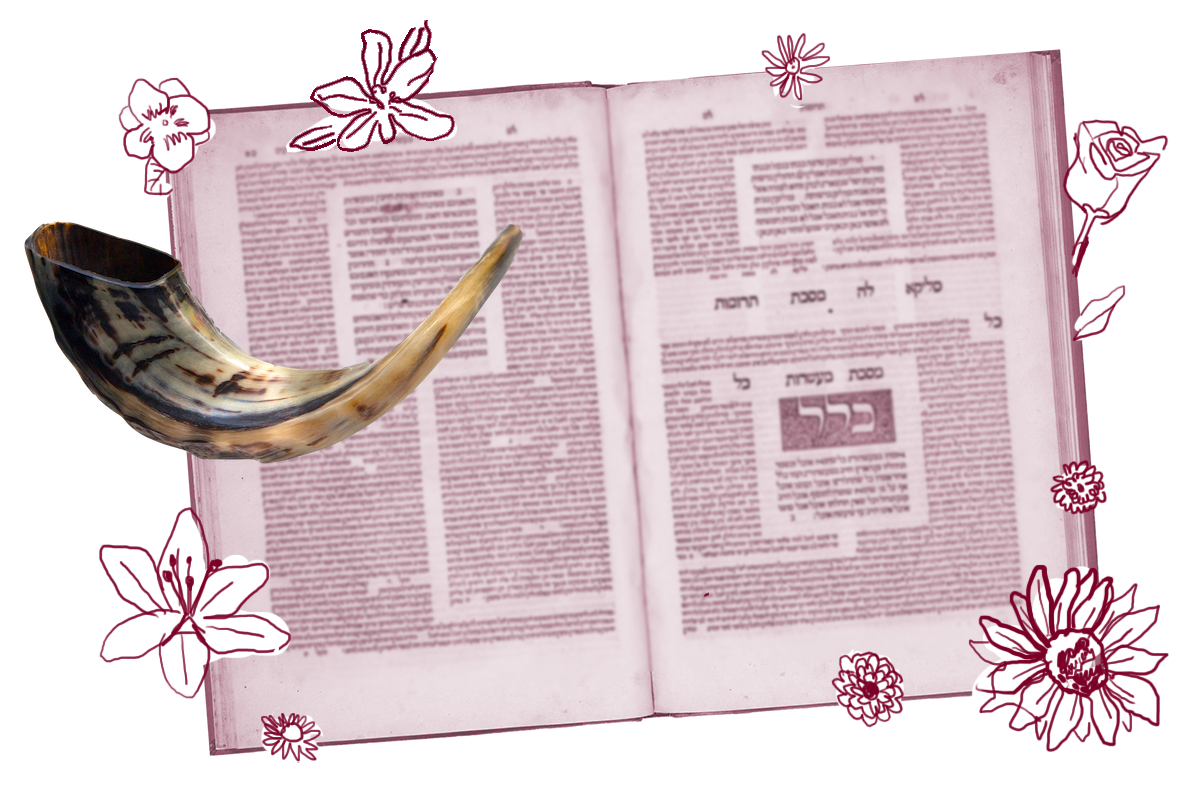The Torah has very little to say about the festival of Rosh Hashanah — it doesn’t even use that name for the holiday. Instead, it’s called Yom Teruah (Day of Sounding the Shofar, Numbers 29:1) and a Memorial Day for Sounding the Shofar (Leviticus 23:24). In fact, the only thing we know about it from Scripture is that it marks the beginning of the seventh month (you read that right — the seventh, not the first) and that it is an occasion for blowing the shofar.
Naturally, the rabbis of the Talmud had their work cut out for them explaining this holiday. Along the way, they spend a great deal of time describing other Jewish new years (there are many!) and exploring the workings of the calendar, in particular weighing the consequences of choosing a calendar that is fixed ahead of time versus a calendar that is decided month by month according to witness testimony about the new moon. This short tractate also includes laws of the shofar and concludes with some observations on Jewish prayer. There are four chapters in total.
Chapter 1
This chapter opens with a mishnah that states there are in fact four new years. Ancient Israel had several different annual cycles, many of them tied to agriculture and tithes (agricultural taxes) that began at different seasons. The titular new year, Rosh Hashanah, takes place on the first of Tishrei and is the most prominent, identified as the new year for years (that is, the overall calendar) as well as for sabbatical and jubilee and several kinds of tithes. The other recognizable new year in this mishnah is the 15th of Shevat which is the new year for trees — a.k.a. Tu Bishvat. The first of Nisan is the new year for festivals, making Passover the first festival on the calendar.
The discussion of new years leads into a more general discussion of the calendar, which is identified as a lunar-solar calendar, with 12 or 13 lunar months. Each new month was determined by testimony, given at the Sanhedrin (high court) in Jerusalem, that a new moon had been seen. This system had numerous associated challenges, however. For one, it meant that the dates of festivals could not be known far in advance, since one never knew if a month was 29 or 30 days long. It also meant that informing outlying communities of the calendar was complicated — made more so by other groups that wished to interfere with Jewish practice. This challenge led the sages to decree that Diaspora communities would celebrate two festival days instead of one, a practice that continues in many communities today.
With your help, My Jewish Learning can provide endless opportunities for learning, connection and discovery.
Chapter 2
This chapter focuses on the requirements for witnesses who testify to the new moon. The testimony of these witnesses was critical — all Israel’s performance of the mitzvot of observing festivals depended on them — and therefore measures had to be put in place to ensure that testimony was received, and that it was valid.
Chapter 3
This chapter takes up the requirement to sound the shofar on Rosh Hashanah. It must be a shofar and no other kind of horn. The rules for the shofar, the blower and the listener are interrogated. It is determined that the purpose of sounding the shofar is to turn the hearts of Israel toward God in heaven.
Chapter 4
Although it is the central mitzvah of the holiday, the shofar is not blown on Rosh Hashanah when the holiday falls on Shabbat, out of concern that the shofar will be carried in the public domain (the exception to this is the Temple where the shofar was blown every Rosh Hashanah including those that fell on Shabbat). Other issues that crop up when Rosh Hashanah falls on Shabbat are explored.
Toward the end of this chapter, the sages also began to fix the liturgy for Rosh Hashanah, developing themes that entered the Rosh Hashanah Musaf service, which is today the liturgical highpoint of the holiday.



